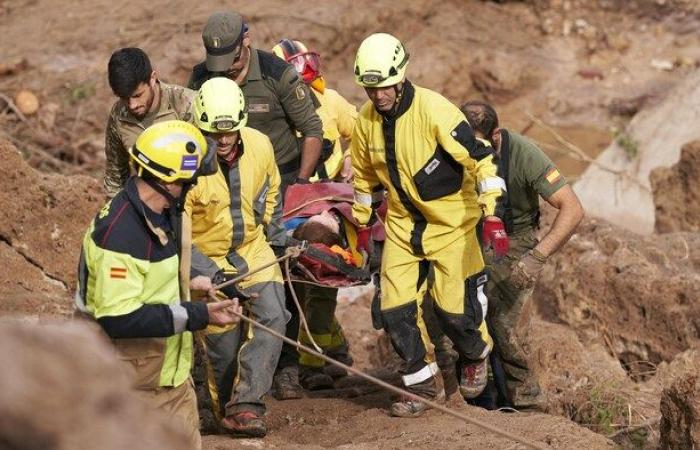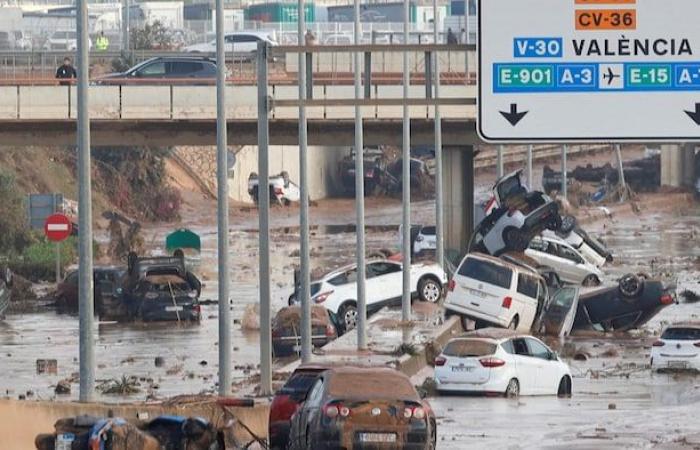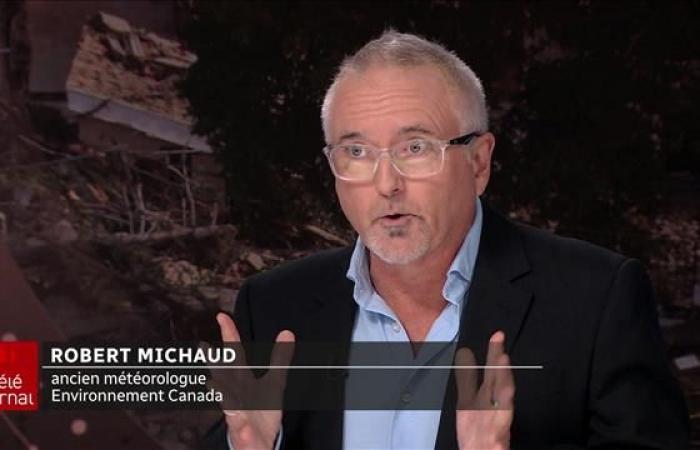The death toll from this week’s apocalyptic floods in southeastern Spain reached 158 deaths on Thursday as searches continued for “dozens and dozens of missing people.”
Of this total, 155 deaths took place in the Valencia region alone, by far the most bereaved by the torrents of mud which devastated the south-eastern part of the country on Tuesday evening and during the night from Tuesday to Wednesday. To which must be added two deaths in the neighboring province of Castile-La Mancha and one in Andalusia.
The previous report, which dated from Wednesday evening, reported 95 deaths, but the authorities had made no secret of the fact that the worst had to be expected, without however giving any information on the number of people missing.
For the first time, the Minister of Territorial Policy, Ángel Víctor Torres, put forward an estimate on this subject, declaring at a press conference in Madrid that there were Thursday evening dozens and dozens
of missing.
He also announced that the central government had agreed to make available to the regional government all army resources
to open roads and reach in every corner
of the affected area, which suggests that some villages are still cut off from the world.
Mr. Torres also indicated that 39 people had been arrested and that in the face of looting and crime
the security forces would demonstrate absolute firmness
. More than 1,200 soldiers are already deployed on the ground, mainly in the Valencia region, alongside firefighters, police officers and rescue workers.
Open in full screen mode
Thousands of soldiers and rescuers were dispatched to the field to find and help survivors.
Photo : Getty Images / Mateo Villalba Sanchez
A postapocalyptic setting
On the ground, the sun returned on Thursday, 48 hours after the tragedy, producing a striking contrast with the spectacle of desolation offered by all the localities in the area.
In Paiporta, a town of 25,000 inhabitants in the southern suburbs of Valencia, at least 62 people died, according to the mayor, Maribel Albalat. Still stunned, residents tried to clean the streets, covered in viscous mud, in a sad setting. There is no longer a business standing
dropped David Romero, a 27-year-old musician.
Visiting Valencia, capital of the eponymous region, Prime Minister Pedro Sánchez assured that the episode of bad weather was not not finished
and asked the inhabitants of this region to stay at home
and of not to go out
.
Mr. Sanchez was referring to a red alert
launched Thursday morning by the National Meteorological Agency (AEMET) for certain areas of the province of Castellón, located just north of that of Valencia, where heavy rains fell. However, the alert was lifted in the afternoon, moving to orange, which reflects a reduction in the danger.
According to authorities, thousands of people are still without electricity in the region. I never thought I would experience this
told AFP Eliu Sánchez, resident of Sedavi, a town of 10,000 inhabitants in the suburbs of Valencia, recounting a nightmarish night.
We saw a young man in a vacant lot taking refuge on the roof of his car
said this 32-year-old electrician. He tried to jump
on another vehicle, but the current took it away
.
High-speed trains between Madrid and Valencia, suspended since Wednesday, will remain so at least for two to three weeks
indicated the Minister of Transport, Óscar Puente.
Open in full screen mode
Many roads remain closed, while countless car wrecks litter the roads, covered in mud and debris.
Photo: Reuters / Eva Manez
Warming pointed out
According to AEMET, more than 30 cm of rain fell overnight from Tuesday to Wednesday in several towns in the Valencia region, with a peak of 49 cm in the small village of Chiva. It is the equivalent of a year of precipitation
specified the Spanish agency.
The Valencia region and the Spanish Mediterranean coast in general regularly experience, in autumn, the so-called phenomenon of cold drop
(the cold drop
), an isolated high-altitude depression that causes sudden and extremely heavy rain, sometimes for several days.
But the phenomenon had never reached such magnitude. The worst cold drop of the century
was the headline on the front page of the daily The Country.
In a first analysis, scientists from World Weather Attribution, a reference network that studies the link between extreme weather phenomena and climate change, estimated Thursday that climate change is the most likely explanation
to the violence of bad weather in Spain.
According to this analysis, the torrential rains that hit Spain were 12% heavier and twice as likely as if the climate had not warmed.

The devastating floods in Spain were caused by what the Spanish call the “cold drop”. Interview with Robert Michaud, former meteorologist, Environment Canada.








